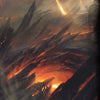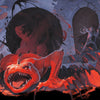10 Things Every D&D Dungeon Map Should Have (and Why They Matter)

By Luke Hart
Let’s be honest: most of us have drawn some really terrible dungeon maps at some point in our game mastering careers. I’m not just talking about amateur hour—some of the worst maps I’ve ever seen are ones I drew myself. Random hallways, nonsensical layouts, rooms that serve no purpose whatsoever. If that sounds familiar, don’t worry—you’re not alone.
But the good news is that you can fix it. Today, we’re diving into 10 essential features that every D&D dungeon map should include—and more importantly, why they matter for great gameplay.
By the way, if you need a quick adventure to run for your group when you're in a pinch, check out all the one-shots we have to choose from. Grab an adventure, read it in about 15 minutes, and you’re ready to run your game!
Watch or listen to this article by clicking the video below.
1. Architectural Sense
No more hot mess hallways or mazes of meaningless rooms. Unless your dungeon was built by a deranged beholder, most intelligent creatures will design structures that actually make sense. That means rooms have purposes, hallways serve functions, and the whole layout supports the theme—whether it's a temple, fortress, or abandoned mine.
Natural caverns are an exception, of course, but even those should have signs of adaptation by their current inhabitants.
2. Multiple Entrances
One way in, one way out? Boring. Always give your players at least two entrances to choose from, ideally with pros and cons. Maybe the front gate is guarded by ogres, but the side tunnel drops you into the middle of a gelatinous cube nest. The choice adds tension, drama, and meaningful decisions—which is what exploration is all about.
3. Non-Linear Layout
Nothing kills player agency like a dungeon that’s just a straight line of encounters. Linear maps feel like a railroad, not an adventure. Give your players options: branching paths, loops, secret hallways. Let them decide what to explore and what to skip. Non-linear maps empower player choice and make the whole place feel more real.
4. Ceilings (Yes, Really)
Not just any ceilings—appropriate ceilings. A 5-foot-wide hallway with a 30-foot ceiling is weird. But beyond realism, ceilings influence gameplay. That wizard who loves to polymorph into a T-rex? Not so fun when he’s squeezing through a 10-foot-high hallway. Flight, fireballs, summoned monsters—all these behave differently with vertical constraints. Ceilings are tactical tools, not just architectural afterthoughts.
5. Interesting Features
A room should be more than a square with a table. Give your players things to interact with—arcane statues, whispering skulls, a magical forge that glows when orcs are near. Even mundane spaces (bedrooms, kitchens) can include small details that reinforce the theme or hint at bigger secrets. Not every feature needs to be a plot hook, but some definitely should be.
6. Secret Doors and Hidden Areas
No, not every dungeon needs a hidden chamber, but most should. Secret doors reward player curiosity and reinforce the exploration pillar. They’re also a great way to hide powerful loot, optional lore, or a shortcut through the dungeon. If your rogue checks every wall, don’t punish them with nothing—reward them with wonder.
7. Elevation and Verticality
Dungeons aren’t flat. Incorporate elevation changes with stairs, pits, ledges, balconies, or sloped tunnels. A goblin sniper on a high ledge. A vampire’s coffin chamber deep below the ruins. A throne room with raised galleries. Vertical thinking adds new dimensions to combat and exploration, literally.
8. Lighting (or Lack Thereof)
Think through where the light is—and where it’s not. Not every dungeon needs torches, but you should know where they are. Lighting affects stealth, visibility, mood, and player tactics. Whether it’s magical braziers, bio-luminescent moss, or pitch-black corridors—make it intentional.
9. Combat-Ready Spaces
You’re not just drawing blueprints; you’re creating battlefields. Design rooms and corridors with tactical combat in mind. Cover, hazards, choke points, and vertical positions all add excitement. A hallway with murder holes. A chamber with crumbling balconies. Build your map to make fights memorable and mechanically dynamic.
10. Doors (Yes, This Deserves Its Own Point)
Doors add mystery and force decisions. Which room do we open first? What might be behind it? Without doors, players will use scouts and spells to see the entire dungeon before anyone rolls initiative. Doors preserve suspense, limit information, and give explorers that classic “what’s behind this one?” moment. Realism matters, but so does good gameplay.
Bonus Tip: Floors Exist, Too
Okay, this one’s just for symmetry—but seriously, don’t forget floors. Consider traps, creaky boards, runes etched into stone, or shifting tiles. The ground beneath your players’ feet can be just as dangerous (or interesting) as anything else in the dungeon.
Easy-to-Prep One-Shot Adventures
Whether you're too busy to prep an adventure and game night is fast approaching or you'd just rather use a professional pre-made adventure for your group, our 5e and PF2e one-shot adventures have you covered.
- Dozens of adventures, all levels of play
- Lightning fast to prep
- Read-a-loud text, NPCs, area descriptions, roleplaying notes, encounter notes
- Digital maps (GM and player versions, gridded and un-gridded)
- Everything you need to play!
Gone are the days of just winging it and hoping for the best. Check out everything our one-shot adventures have to offer today!
-
Posted in
Game Master How-To Articles







